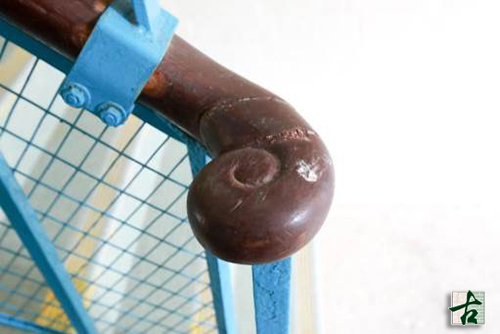Block 25 of the old Lei Yue Mun Barracks
The old Lei Yue Mun Barracks was one of the earliest and most important British Army fortifications in Hong Kong. Situated at the northeast corner of Hong Kong Island overlooking the eastern approach to the Victoria Harbour, Lei Yue Mun occupied a strategic position. In 1885, the military decided to construct a permanent infrastructure at Lei Yue Mun. In 1889, land was transferred to the War Department for constructing barracks at Lei Yue Mun. The Barracks consisted of the central area (main barracks), the western ridge (upper fort) and the headland (lower fort). The main barracks, built at different times from 1890 to 1939, mainly served as offices and married quarters for the British Army. By the 1890s, the fortifications at Lei Yue Mun had fully become an important point of coastal defence and continued to expand in the following decades.
By the 1930s, the strategic importance of Lei Yue Mun had declined considerably as a result of technological and tactical advances. On 19 December 1941, the Barracks fell to the hands of the Japanese in the Battle of Hong Kong. In the post-war period, the Barracks was used by the British Army as a training ground until 1987, after which the Barracks was returned to the Hong Kong Government for civil use. The central area and the western ridge have become the Lei Yue Mun Park and Holiday Village since 1988, whereas the military installations at the headland were restored to form the Museum of Coastal Defence which was opened in 2000.
Block 25, used as the officers mess, is believed to have been built in the late 1890s to early 1900s. It is one of the earliest buildings constructed in the first phase of the barracks development and is a good representative example of early colonial military architecture.
Block 25 is a two-storey building with elegant simplified Classical design, featuring open colonnaded and balustraded verandahs on three sides. The east facade retains much of its original appearance. The walls and columns are painted brickwork. The verandahs are supported by square brick columns with simple bases and capitals. The first floor verandah has typical urn-shaped classical balustrading, but the balustrading to the ground floor verandah is of a different design. There are moulded cornices at the first floor and eaves levels. Internally, the spaces remain structurally similar to their original appearances.
Block 25 of the old Lei Yue Mun Barracks was declared a monument in 2016.
Please refer to the Booking Guide on the website of Lei Yue Mun Park for information about admission to Lei Yue Mun Park.





